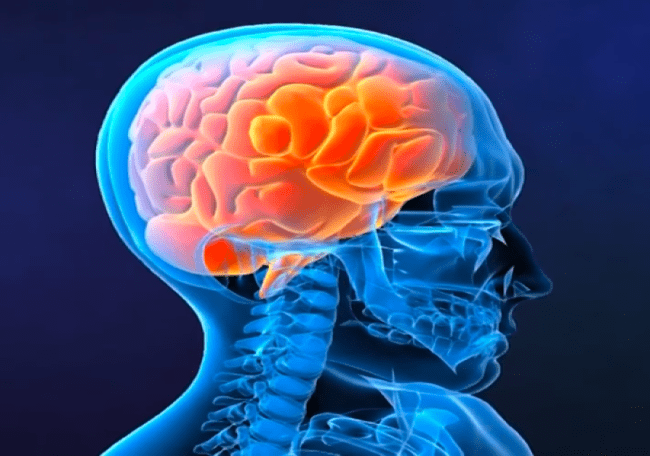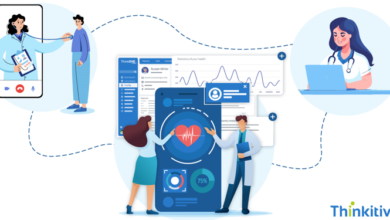6 Stages of Concussion Recovery: A Comprehensive Guide to Healing and Thriving
Discover the Path to Full Recovery with These Key Stages

Concussions are serious injuries that require careful management and a structured approach to recovery. Understanding the six stages of concussion recovery can empower you to take control of your healing process and return to your daily activities safely and confidently. This guide outlines each stage, offering practical advice and insights to help you navigate your recovery journey.
Introduction
Concussions, a form of traumatic brain injury, can happen to anyone, whether from a sports injury, a fall, or a car accident. The key to effective recovery lies in understanding and following the appropriate stages of healing. In this article, we will delve into the six stages of concussion recovery, providing you with a roadmap to regain your health and well-being.
Stage 1: Initial Impact and Immediate Response
The first stage begins at the moment of impact. Whether it’s from a fall, a vehicle collision, or a sports injury, the brain is jolted against the skull, causing bruising and damage to brain cells. Symptoms can appear immediately or may take hours to develop, including confusion, blurred vision, and headaches. It’s crucial to seek medical attention immediately to assess the extent of the injury and rule out severe complications like bleeding or swelling in the brain. Early diagnosis and management significantly influence the recovery trajectory.
Key Points:
- Immediate symptoms may include confusion, blurred vision, and headaches.
- Seek medical attention promptly.
- Early diagnosis can improve recovery outcomes.
Stage 2: Acute Phase
During the acute phase, which lasts from several hours to a few weeks post-injury, symptoms can evolve and vary widely among individuals. This phase requires rest and avoiding activities that can exacerbate symptoms. Common issues include headaches, dizziness, cognitive impairments, emotional instability, and sleep disturbances. The brain is in a vulnerable state, making rest and avoidance of further injury paramount.
Key Points:
- Symptoms can include headaches, dizziness, and cognitive impairments.
- Rest and avoid physical and mental stress.
- Monitor symptoms closely and adjust activities accordingly.
Stage 3: Subacute Phase
Extending from the end of the acute phase to several months post-injury, the subacute phase sees a reduction in symptom intensity. However, some symptoms may linger, impacting daily activities and quality of life. Rehabilitation efforts often begin during this stage, including physical therapy, cognitive rehabilitation, and counseling to address emotional and psychological effects. Careful management is required to avoid setbacks, and activities should be reintroduced gradually under professional guidance.
Key Points:
- Gradual reintroduction of activities.
- Rehabilitation efforts begin, including physical and cognitive therapies.
- Avoid setbacks by following professional guidance.
Stage 4: Symptom Resolution
In this stage, the majority of symptoms typically resolve, and the individual starts to feel normal again. For some, this stage can come within a month, but for others, it may take longer. Continuous monitoring for any recurring or new symptoms is essential, as recovery from a concussion can be non-linear. Engaging in regular follow-ups with healthcare providers ensures any persistent issues are addressed promptly.
Key Points:
- Most symptoms resolve.
- Monitor for any new or recurring symptoms.
- Regular follow-ups with healthcare providers are important.
Stage 5: Ongoing Recovery
While many people fully recover from concussions, some may experience lingering effects, a condition known as post-concussion syndrome. This stage is characterized by persistent symptoms such as headaches, cognitive difficulties, and emotional and behavioral changes that can last for months or even years. Adopting new strategies to manage these symptoms and maintain quality of life is crucial. This might include adjustments at work or school, continued rehabilitation therapies, and regular medical check-ups.
Key Points:
- Persistent symptoms may indicate post-concussion syndrome.
- Implement strategies to manage symptoms.
- Regular medical check-ups are vital.
Stage 6: Long-Term Management
The final stage involves the long-term management of any residual effects. For those who experience prolonged symptoms, developing a comprehensive management plan is essential. This plan may include ongoing medical care, support services, and possibly legal assistance to explore all potential avenues for aid and compensation, particularly if the concussion resulted from an accident or assault.
Key Points:
- Develop a comprehensive management plan.
- Ongoing medical care and support services.
- Explore legal assistance if necessary.
Conclusion
Recovering from a concussion can be a prolonged and challenging process. Understanding the stages of recovery helps individuals and their families set realistic expectations and engage in appropriate interventions. Recognize the importance of professional guidance, whether medical or legal, to ensure the best possible outcome. Concussions are not just medical issues but also personal and, at times, legal challenges that require a multifaceted approach. Comprehensive support can make all the difference in achieving a full and effective recovery.
By following these six stages and seeking the necessary support, you can navigate your concussion recovery with confidence and optimism, ultimately returning to your daily activities and enjoying a healthy, active life.
Additional Tips for Effective Concussion Recovery
- Rest and Sleep: Prioritize rest and ensure you get plenty of sleep to aid brain healing.
- Hydration and Nutrition: Maintain a healthy diet and stay hydrated to support overall recovery.
- Avoid Alcohol and Drugs: These substances can interfere with the healing process.
- Gradual Return to Activities: Follow a step-by-step approach to reintroduce activities and avoid overexertion.
- Stay Positive and Patient: Recovery can be slow, but maintaining a positive attitude and patience is key.
Concussions require careful attention and management, but with the right approach, full recovery is possible. Use this guide to understand each stage and take the necessary steps to heal and thrive.



